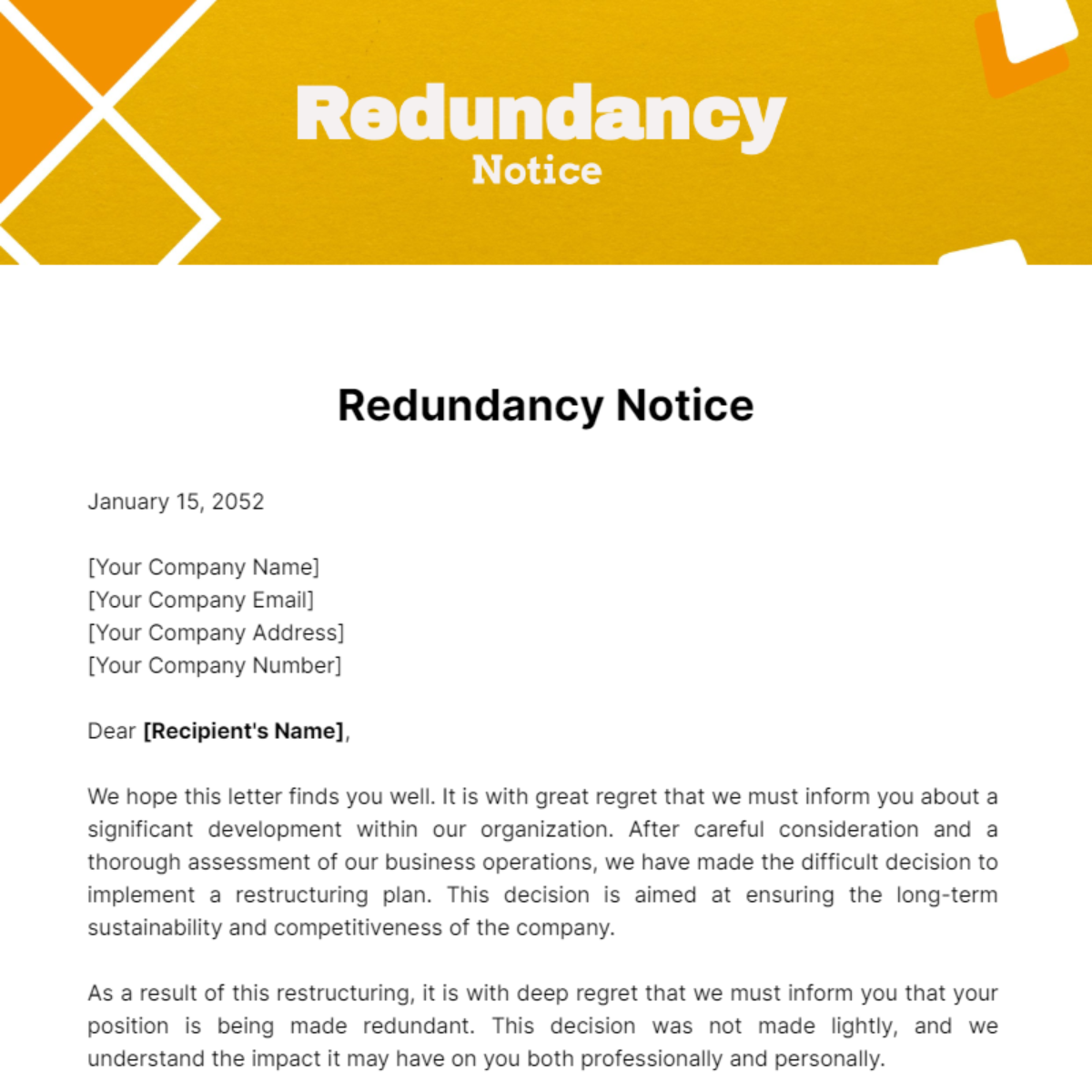Discovering the Operational Characteristics of Firm Redundancy and Its Long-Term Sustainability

Redundancy Techniques for Organization Connection
In order to guarantee undisturbed operations, businesses need to apply reliable redundancy strategies for company continuity. Redundancy in this context refers to the duplication of vital elements or features within a system to alleviate the impact of potential failures. By including redundancy approaches, organizations can improve their strength against disruptions triggered by various variables such as all-natural disasters, equipment failures, or cyber-attacks.
One typical redundancy method is the execution of back-up systems and data storage space solutions. This includes producing matches of vital data and systems that can be triggered in situation of a key system failing. Additionally, companies can establish repetitive interaction channels and power sources to keep connection and procedures throughout unpredicted occasions.
Additionally, cross-training employees to carry out several duties within the company can act as a useful redundancy strategy. If vital personnel are not available due to disease or other reasons, this makes sure that important jobs can still be lugged out also. Generally, reliable redundancy methods are crucial for services to promote functional continuity and reduce the effect of prospective disturbances.
Influence of Redundancy on Business Durability
Offered the vital function redundancy techniques play in ensuring service continuity, exploring the influence of redundancy on business durability becomes essential for comprehending the holistic functional characteristics of a company. Organizational durability describes an entity's capacity to adjust to interruptions, recoup from problems, and transform when required while keeping core features. Redundancy, when purposefully executed, can considerably contribute to enhancing a company's resilience despite unanticipated challenges. By having back-up systems, employees, or processes in place, companies can better stand up to shocks and proceed procedures with minimal interruption.
Additionally, redundancy can bolster staff member morale and self-confidence, understanding that there are contingency plans in position to deal with unforeseen circumstances. This feeling of security can result in increased efficiency and a more positive workplace. Furthermore, redundancy can promote innovation and imagination within a company as employees feel equipped to take computed dangers, recognizing that there is a safety web to sustain them in instance of failing. Generally, the influence of redundancy on business durability is profound, forming the lasting sustainability and success of a firm.
Balancing Performance and Adaptability in Redundancy
Accomplishing an unified balance between functional effectiveness and adaptive adaptability is a critical obstacle in the calculated deployment of redundancy within organizations. Efficient procedures are important for keeping performance and cost-effectiveness, guaranteeing that recommended you read resources are used ideally. Nevertheless, excessive focus on performance alone can result in strength, making it challenging for companies to adjust to unforeseen changes or obstacles. On the other hand, adaptability allows companies to respond nimbly to evolving situations, cultivating development and durability. Yet, way too much versatility without a solid functional foundation can cause inadequacies browse around this web-site and variance.
To stabilize effectiveness and flexibility in redundancy preparation, companies must thoroughly analyze their functional requirements, market dynamics, and tactical goals. Eventually, finding the ideal stability in between performance and flexibility is critical for developing a resilient and sustainable organization in the face of uncertainty.
Long-Term Sustainability Via Redundancy Preparation
To ensure enduring feasibility and stability, companies have to purposefully straighten their redundancy preparation with long-lasting sustainability objectives, thus balancing operational efficiency with flexible versatility. Companies need to watch redundancy not as a responsive solution to immediate problems yet as a positive strategy for long-term success.

Positive Procedures for Sustainable Business Procedures
Just how can companies proactively boost their operational sustainability for long-term success? Carrying out positive procedures is necessary for firms aiming to ensure lasting operations.
Additionally, fostering a society of continual improvement and knowing within the organization can enhance flexibility to transforming market conditions and consumer needs. Urging staff member participation in decision-making processes and offering chances for professional growth can increase morale, performance, and total efficiency. Establishing clear objectives, keeping track of vital efficiency indications, and on a regular basis reviewing progress are vital components of proactive sustainability administration.
Collaborating with providers, customers, and various other stakeholders to promote lasting practices throughout the supply chain can develop a causal sequence of positive influence - redundancy pay if company goes bust. By taking positive actions look at this web-site towards operational sustainability, firms can construct strength, drive technology, and safeguard their long-lasting success in an ever-evolving service landscape
Verdict

In the world of organizational administration, the critical deployment of company redundancy stands as an essential yet detailed method that demands a delicate equilibrium between functional performance and long-term feasibility. By exploring the functional dynamics that underpin business redundancy and examining its broader effects for organizational strength and versatility, a nuanced understanding of how redundancy techniques can form the future trajectory of a company starts to unravel.Provided the important function redundancy strategies play in making certain service continuity, checking out the influence of redundancy on organizational durability ends up being vital for understanding the holistic operational dynamics of a business. In general, the impact of redundancy on organizational strength is extensive, shaping the long-term sustainability and success of a firm.
In final thought, understanding the functional dynamics of firm redundancy is critical for ensuring long-lasting sustainability.